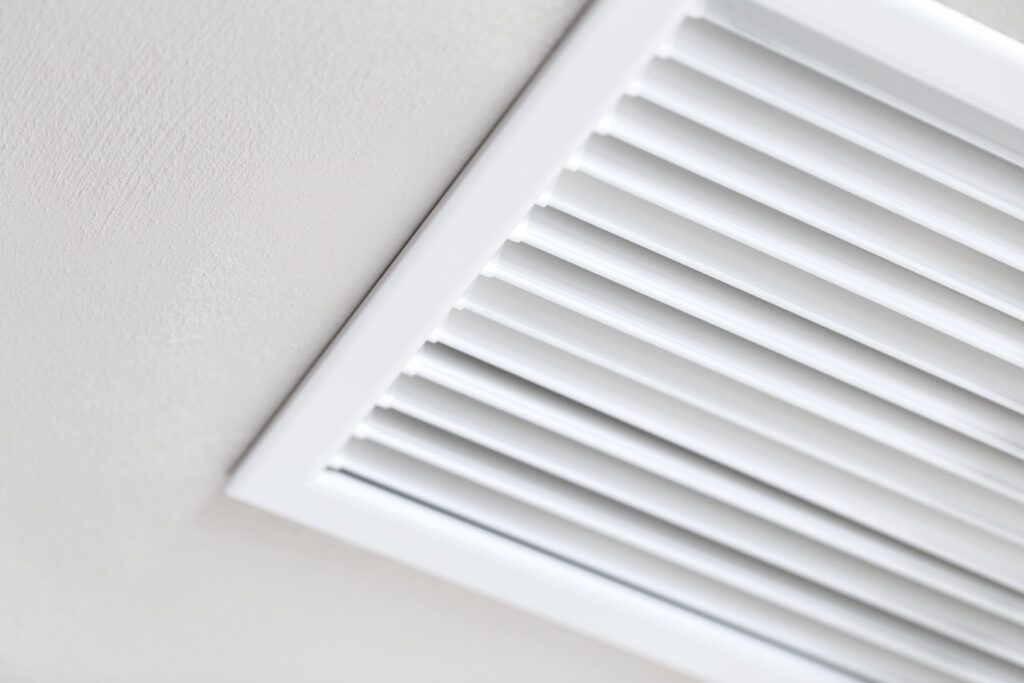For the average person, their home is where they spend the vast majority of their time. With the global pandemic still occurring, many people are spending even more time at home by working from home. Because of these facts, the air quality in our homes can actually play an outsized role in our respiratory health.
Like roofing, plumbing, and other home infrastructure, our ventilation can tend to quickly become an afterthought. However, unlike roofing and plumbing, issues with air quality and ventilation may be more subtle and harder to detect.
In our October blog, we discuss air ventilation in the home and how you can spot and remedy air ventilation issues!
How To Know If Your Ventilation Is Sub-Par
So the air we breathe at home is very important to our health and the health of the home, but how do you know if your home’s ventilation isn’t up to par? We’ve compiled a few tell-tale signs that your ventilation may be in need of some expert work.
You Have A Mold Problem
Mold in your home, especially if it is a frequent occurrence, may be a good sign that your ventilation needs work. This is because poor ventilation will trap moist, stale air, which creates the perfect conditions for mold to set up shop in your home. Mold can also be very difficult to spot at times, depending on the airflow of your home. Common problem areas for mold include near window sills, in bathrooms, and in closets where air can’t circulate as easily.
Constant Condensation On Your Windows
Another sign that your ventilation may need work is frequent condensation on your windows. This effect happens when warm, moist air is drawn to your windows. This happens because your windows are normally one of the coolest points in your home at any given time.
Often, condensation can get so bad that windows and window sills need to be regularly wiped down. In colder temperatures, this can even lead to windows freezing overnight.
The sign of a well-ventilated home is most of the warm, moist air being able to escape the home before it causes excessive condensation.
Excessive Dust In Your Home
If your home seems to be overrun with dust, there’s a good chance that your ventilation may have something to do with it. Specifically, dust may be getting into your home because of gaps in your building. This can be anywhere in your home, but it commonly occurs near doorways and windows.
Of course, it is near-impossible to seal every single crack in your home, but closing up some of the cracks in your home could improve your air quality and dust issues.
Difficulty Cooling Or Heating Rooms
If you feel like it is taking more and more energy to cool or heat the rooms in your home, that may also be a sign that your ventilation is poor. The connection lies in how well cool or warm air is able to flow from your HVAC units to your rooms. If your ductwork is poor or hasn’t been cleaned in some time, it may take more energy to actually achieve your desired temperature.
Tips For Maintaining Good Home Ventilation
Schedule Regular Maintenance
Nothing beats having a team of professionals regularly inspect your home ventilation. This is because they have an eye for detail that non-experts may miss, and have the necessary knowledge to remedy the issue. Regular maintenance may seem like an unnecessary investment, but it can save your health and your ventilation system.
Invest In Air Quality Sensors
Another way that you can keep your ventilation and air quality high is by investing in air quality sensors and other tech. Some devices are able to detect issues with your air quality and alert you so you can take corrective action, rather than breathing unhealthy air.
Trust Ken’s Parkhill Roofing For Your Home Ventilation!
Whether you are in need of a ventilation overhaul or simply need regular maintenance, our team would love to help. For many decades, our family business has helped clients breathe easy and stay comfortable in their homes year-round.
To learn more about what we offer, visit our ventilation page here and get in touch with us directly to schedule your consultation!
